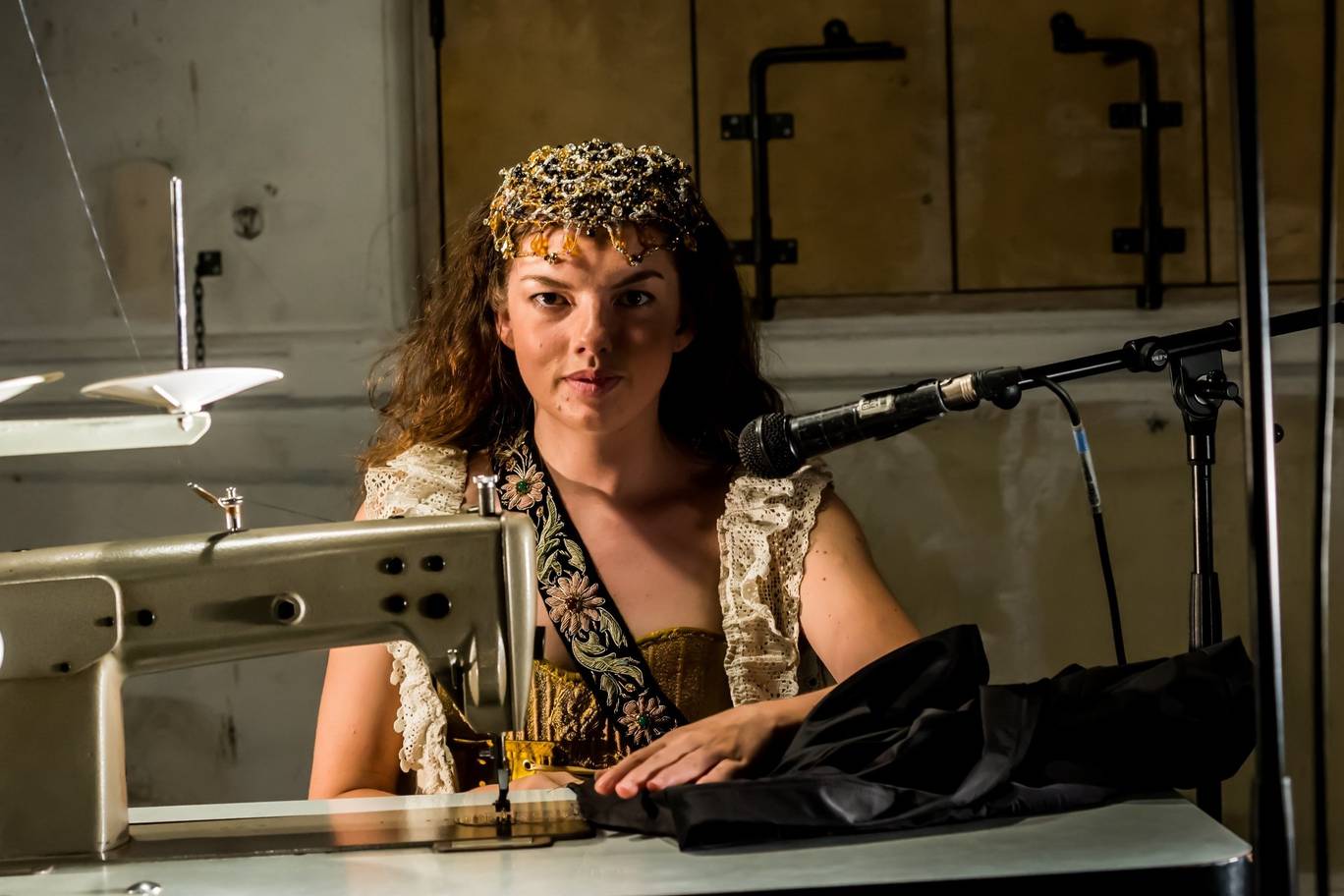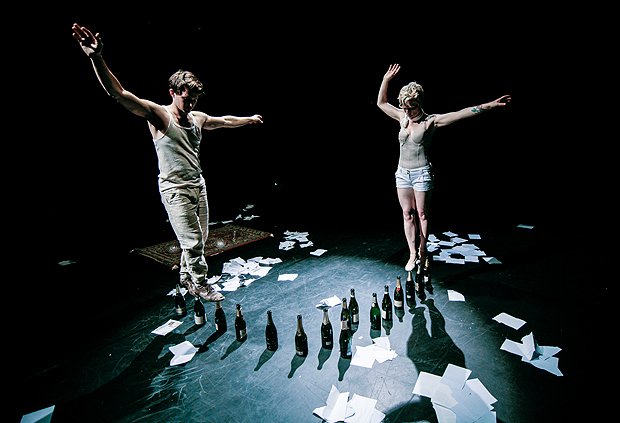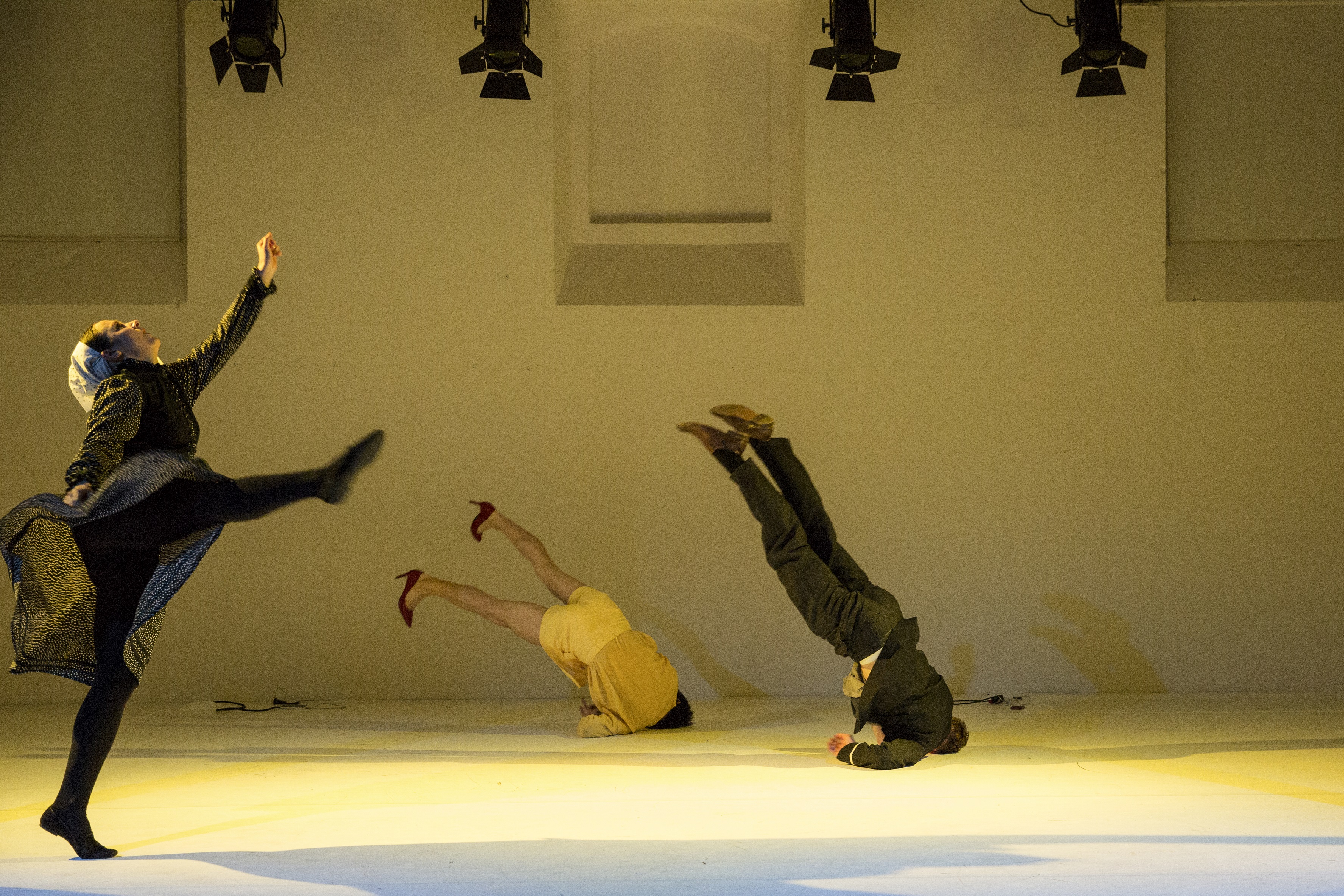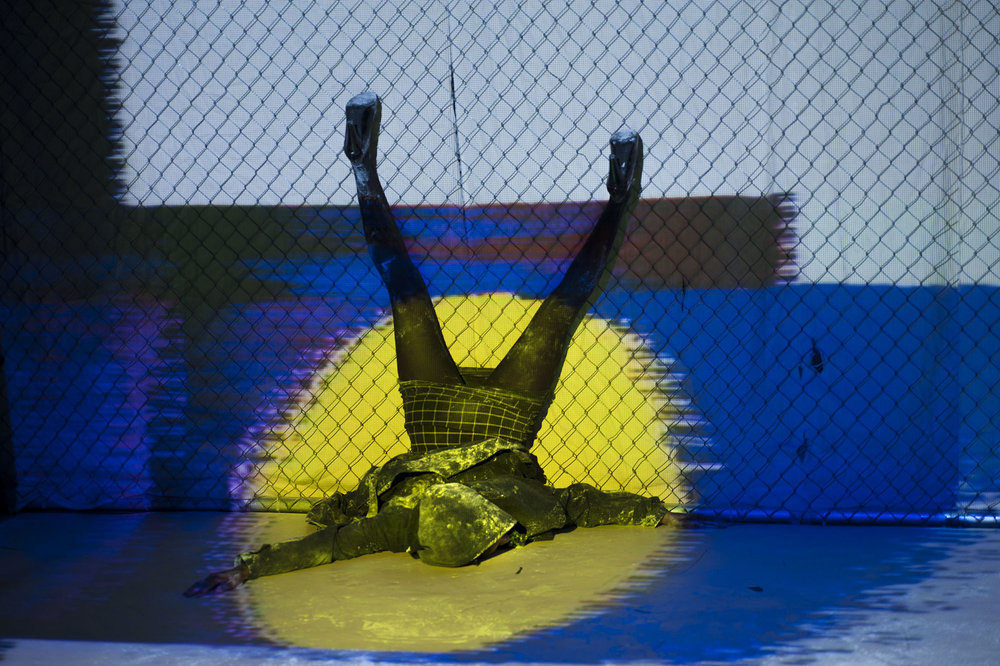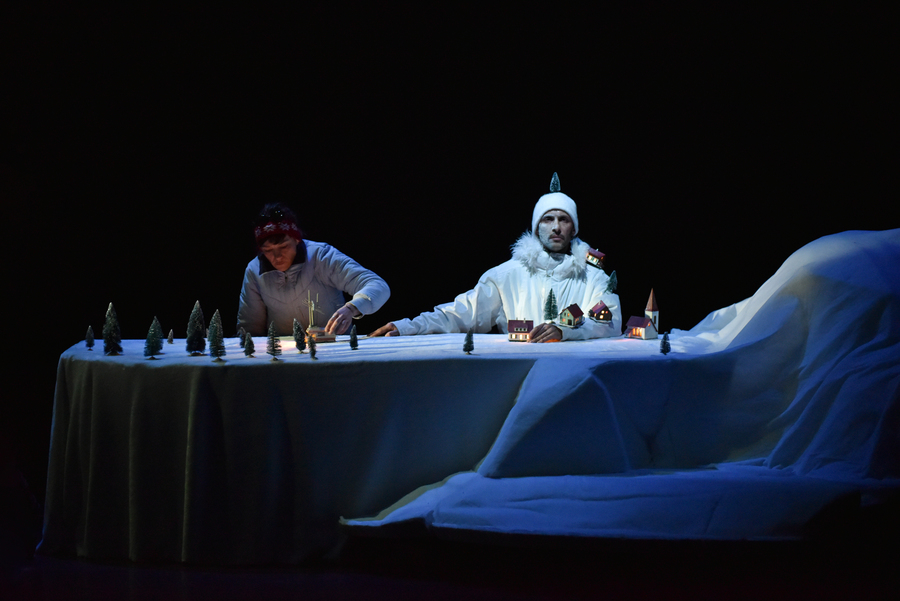Dorothy Max Prior sees four shows presented at Dance Base for Ed Fringe 2018
There is most definitely a different vibe at the year-round Edinburgh venues – go to The Traverse or to the Scottish Storytelling Centre or to Dance Base, and you feel you’ve arrived somewhere welcoming; somewhere with a sense of itself, somewhere that has decided what it will programme in the Fringe and why. Innovative new writing – the Trav. Family friendly shows, often featuring puppetry – the Scottish Storytelling Centre. New directions in dance and movement theatre – then of course, Dance Base. All of these venues welcome audiences from around the world – it is the Fringe after all – but you’ll hear more Scottish accents at these venues than at most of the pop-up spaces that rise like Brigadoon at the end of July and disappear into the mists in early September. It is also true that each of these venues also has a strong commitment to supporting Scottish artists.
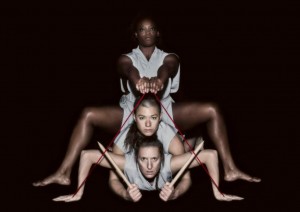
Limosani Projekts and Al Seed Productions: The Spinners
The Spinners is a good example – a Scottish/Australian collaboration three years in the making. The show is the result of a longstanding exchange, research and collaborative process between Scottish physical theatre supremo Al Seed and Australian dancer/choreographer Lina Limosani, who met Seed whilst they were both working on the David Hughes’ show The Red Room.
Three dancers (Limosani herself, together with fellow Australians Tara Jade Samaya and Kialea-Nadine Williams) play the three Moirai or Fates of Greek mythology: Clotho who spins the thread of human fate; Lachesis who dispenses it; and Atropos who cuts the thread, thus determining the individual’s moment of death. This is represented very literally onstage with a recurring scene of a long thread drawn from one dancer’s mouth, then woven into a cat’s cradle choreography, and eventually formed into a funny little corn-dolly type string figure which is then cut and hung up with its companions on to a screen panel strung with lines that is one of the two main physical focal points on the stage – the other being a gold pulpit cum font which comes into its own later in the show…
Beautiful images abound: here, a six-armed goddess, there a pop-eyed lizard, and now a tangled weave of limbs that moves even beyond the animal into something completely mythical. The soundscape is great – another wonderful creation by Guy Veale, who has worked with Al Seed for many years, and whose trademark wall-of-sound design is a strong feature of shows such as The Factory and Oog. The costumes are a bit of a puzzle: plain blue dance leggings / tops that seem a bit nondescript, although perhaps that is the point – the programme stresses that the show aims to relocate the Fates to a modern-day sweatshop, and that is perhaps the logic behind this choice. But to me it reads as ‘dancers’ not as sweatshop workers. Anyway, that aside – sound ideas, solid choreography and direction, and an engaging soundtrack make The Spinners a strong piece of work which doesn’t wow me in the way that Al Seed’s solo work does, but is highly commendable nevertheless.
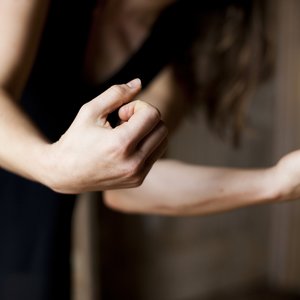
Roberta Jean: Brocade
Weaving also features in the work of another Scottish artist programmed by Dance Base – Roberta Jean, creator of Brocade – although in this case, the show is presented off-site, in the glorious setting that is the Edinburgh City Chambers. It is not a site-specific work, but the piece resonates with the site in an interesting way. Here we are in this place of traditional patriarchal power: the dark wood panelling, stained glass domed ceiling, the big iron fireplace, the oil portraits. But now, at the end of the room, framed by a window that looks out over Waverley and Princes Street Gardens at sunset, are four young and feisty female bodies, simply dressed in what could be a school sports uniform of black shirt and shorts and shoes, skipping from side to side in rhythmic harmony. They break away and hop, skip, gallop or scutter along the inside of the traverse lines of chairs, then go behind us, round the back, to appear in a different formation for another pattern – in twos, in fours, solo. The only sound is the percussive note of their feet on the floor as they mark out the stitches in this ‘loom of movement glosses’. Machine women embodying the labour of generations of weavers.
Eventually, there are other sounds. Violinist Angharad Davies, who has been sitting as a silent witness so far, stands and scrapes a few small sounds on her violin, this building into full throttle. Roberta Jean removes herself from the dancers to create a looped vocal soundscape. Lovely though the vocal sound is, the dramaturgical logic of her removing herself from the ‘machine women’ ensemble bothers me a little – her taking herself outside of the uniformity of the four-strong ensemble seems to rather oddly shift her role. I also find Angharad Davies being drawn into the dance similarly ‘not quite right’. It is, though, a very strong work, with the decision to place it here in the City Chambers a stroke of genius.
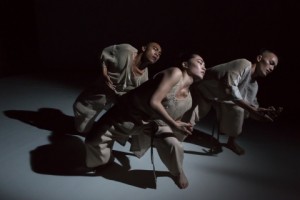
Tijmur Dance Theatre: Varhung – Heart to Heart
Overseas artists are also well represented at Dance Base. For example, in 2018 it plays host to some of the works in the Taiwan Season, which is becoming an established fixture of the Edinburgh Fringe. Varhung – Heart to Heart, by Tjimur Dance, a piece for three dancers, two men and one woman. The Paiwan word ‘varhung’ literally translates as ‘heart’ but, as is the case also in English, the word has various metaphorical meanings as well as its literal one – in this case, ‘an expression of internal affections and feelings caused by various emotions such as joy, anger, sadness, and happiness’. The piece explores the interplay of human relationships in the workplace, specifically the lives of Paiwanese shell-ginger pickers, who often live and work together for months, not returning to their homes until the picking season is over. At the heart of the work is not only the life of the heart but also the traditions of specific four-step dances and workers’ songs – these transposed by choreographer Baru Madijin into a contemporary movement language and soundscape.
I can’t comment on how the choreography relates to its source material, but the movement work I witness is fluid and emotionally resonant. I see friendships developing, possibly illicit love affairs. I see people supporting each other, working together; and people stepping forward to voice personal angst or happiness. The merging of live song and movement work is joyful and uplifting. It is not a life-changing show for me, but its gentle but strong energy is appealing, and I feel a window has been opened to invite me to look in on a culture I know very little about.
Dance Base programmes some shows for the whole of the August festival season, but it also hosts many companies for just a week or so – making an appearance at the Fringe more do-able for the artists. Brocade, for example, was presented for just four dates, 13th to 17th August; and The Spinners ran from the 3rd to the 19th.
Jungle by Pink Mama is a cracking piece of dance-theatre that also ran just for the first two weeks of the Fringe. The show’s Polish choreographer Sławek Bendrat is (with Dominik Krawiecki) this Swiss company’s co-artistic director, and the cast is a multi-national one.
Questioning what colonialism means in a ‘post-colonial’ world come a cast of four: Charlotte Mclean plays Vicky, a rather sporty Instagram-obsessed British feminist; Valentin Markus Oppermann (also the show’s sound designer) is Billy, a traumatised American soldier; Izabela Orzelowsk is Theresa, a lost Victorian missionary; and Tomek Pomersbach is Carmen, a Venezuelan trans-woman.
Actually, the colonial theme of Jungle is of less relevance than the exploration of gender, sexuality, identity and desire that is at the core of the piece. The four bounce on as if contestants in a dance marathon, stepping together with boundless energy. The rhythms and moods shift and change – there is a beautifully tender encounter between Billy and Carmen; and Vicky infects Theresa with her freewheeling liberation, resulting in a gorgeous hair-shaking duet. The show is rather oddly imbalanced, with some characters more explored than others – Tomek Pomersbach, for example, gets to dance a very long and beautiful solo towards the end, as Carmen removes wig and skirt to reveal and revel in the masculine body underneath.
I later find out that the show (at 40 minutes) is presented here in Edinburgh at half its usual length, and thus is more of a showcase piece than a complete show. But an inspiration, bursting with ideas and energy – I’d love to see the full length show. I struggled to fully understand how the exploration of colonialism was playing out, other than in the angst of the young soldier, and a scene in which the missionary was seemingly attacked and intimidated – but perhaps all becomes more apparent in the full piece. But even in its shortened version, with these puzzling aspects of its dramaturgy, Jungle was the Dance Base show that stole my heart – not least for the vital and inspiring performances by its cast of four.
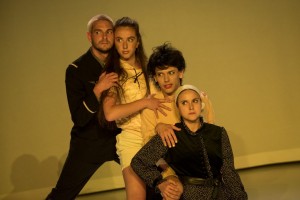
Pink Mama Theatre: Jungle
For full information on all shows in their Edinburgh Fringe 2018 programme, and for more on Dance Base: Scotland’s National Centre for Dance, see www.dancebase.co.uk

